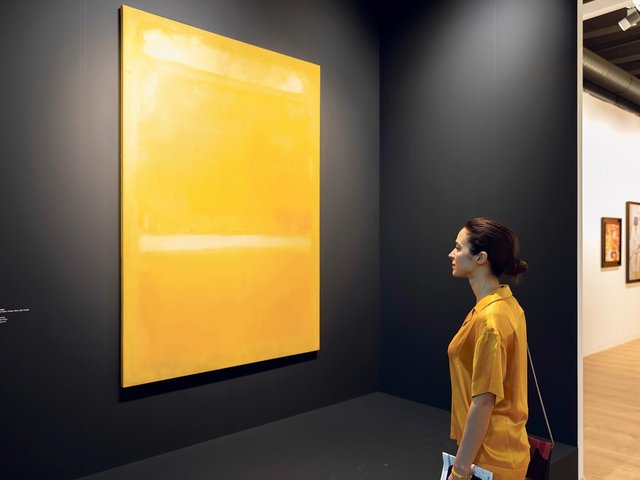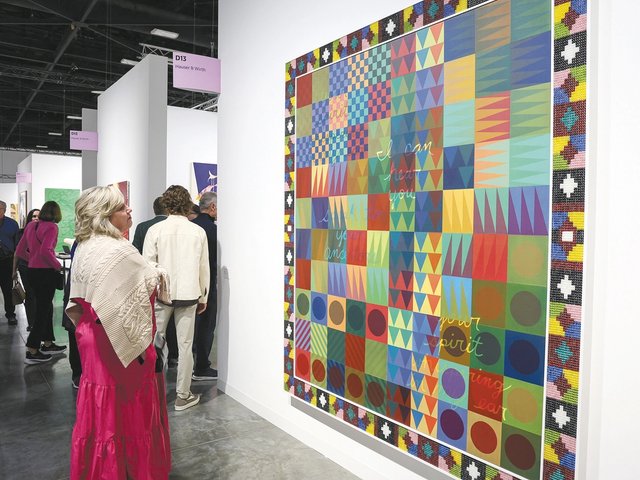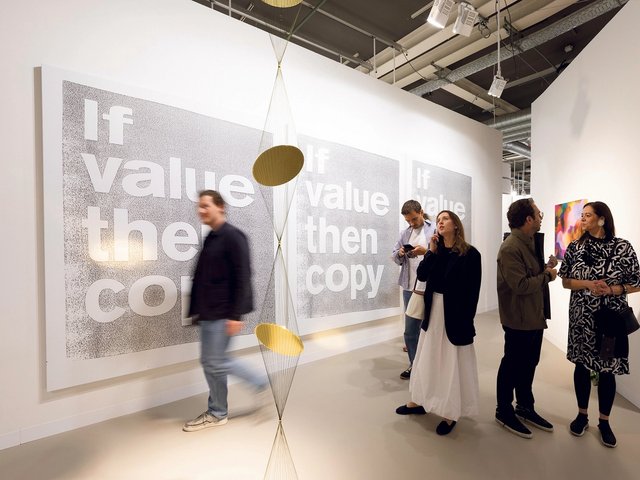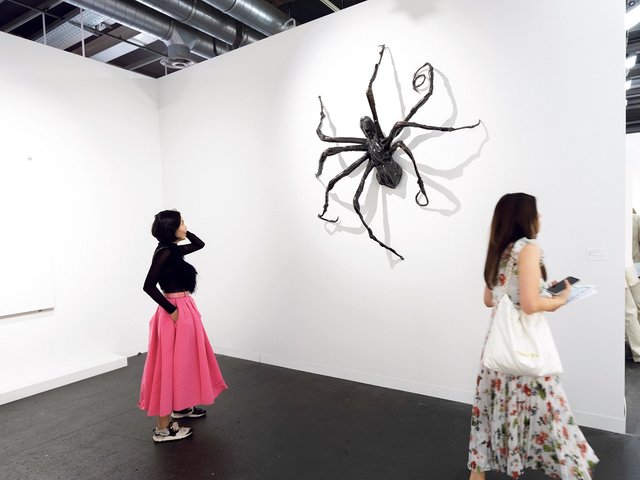It was at the 2022 edition of Art Basel when talk of an oncoming market correction first began to take root among the more sceptical contingents of the art trade. So it is fitting that, two challenging years later, with the still-green stalks of Agnes Denes’s Honoring Wheatfield—A Confrontation dominating the Messeplatz, a chastened industry is once again seeing signs of renewal.
“In spite of the ‘doom porn’ currently circulating in the art press and along gossip grapevines, we are very confident in the art market’s resilience, and the first day of Art Basel has confirmed our perspective,” Iwan Wirth, the president of the Swiss mega-gallery Hauser & Wirth, said in a statement near the end of the fair’s first preview day. “The advantage of the market returning to a more humane pace is that the most discerning international collectors are committing here and now to the very best of the best.”
The early returns at the uppermost tier of the trade backed up Wirth’s bombast. By mid-afternoon on Tuesday, his gallery reported that it had sold Arshile Gorky’s Untitled (Gray Drawing (Pastoral)), from 1946-47, for $16m, along with a work by Blinky Palermo for around $4m and a Louise Bourgeois sculpture, Woman with Packages (1987-93), for $3.5m. All told, Hauser & Wirth made sales of more than $40m by the end of the day.
“It is as lively as it’s ever been,” Wirth told The Art Newspaper early on, adding as he gestured toward the visitors thronging his gallery’s stand: “They haven’t come here to just eat the sausage in the courtyard.”
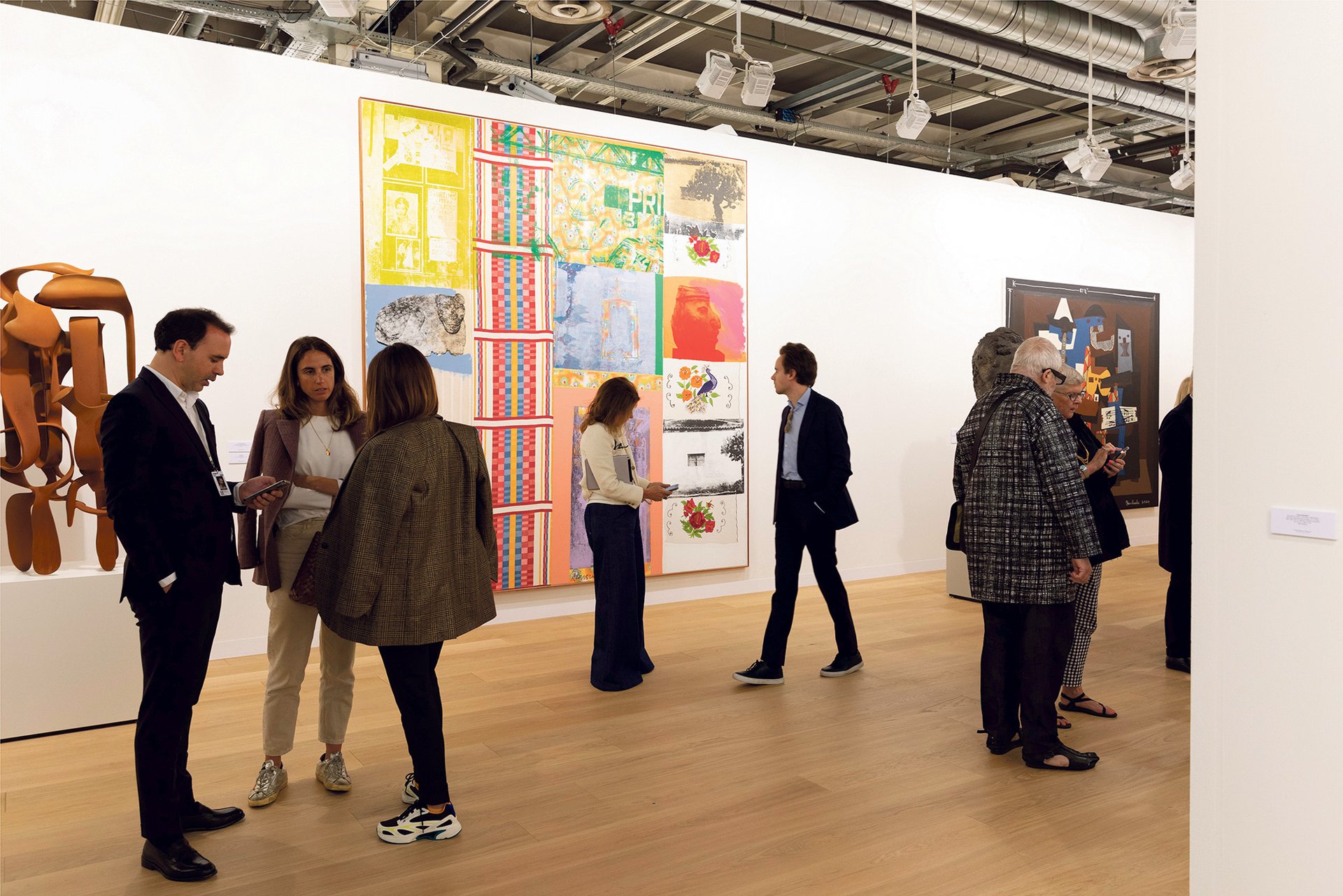
At Thaddaeus Ropac, Robert Rauschenberg’s Market Altar / ROCI MEXICO (1985) sold for $3.85m; works by Georg Baselitz also did well David Owens
Despite Hauser’s hometown advantage, however, another mega-gallery posted the preview day’s top transaction. David Zwirner reported selling a knockout Joan Mitchell diptych, Sunflowers (1990-91), for $20m, as well as a 2016 Gerhard Richter Abstraktes Bild for $6m. The gallery also found buyers for two Josef Albers pieces—Study for Homage to the Square (1966) for $1.6m and On the Other Side (1952) for $1.1m—along with an untitled Mitchell painting from 1973 for $1.3m. Its full first-day results rivalled Hauser’s.
“We’re at the Big Kahuna now, and it makes all the difference,” one industry insider said outside Zwirner’s stand, as the Mitchell canvases on display magnetised a bustling crowd shortly after the doors opened. It was a sight that called back to the bull market of 2021-22, at least if you keep your vision trained on the blue-chip offerings.
Pace Gallery sold Untitled #20 (1974), a major painting by Agnes Martin, for an undisclosed amount, though many speculated it may be among the most valuable works on offer at Art Basel. The final price likely landed well above the $2.4m paid for it at Christie’s in New York 12 years ago but below the artist’s $18.7m auction record, for Grey Stone II (1961) at Sotheby’s in New York last November.
“There’s a desire to overanalyse market prognostics like interest rates and geopolitical events, but it’s not a perfect science,” Noah Horowitz, the chief executive of Art Basel, told The Art Newspaper. “The market is human-to-human movements, and it’s also about unique objects. Despite certain indications of where things are trending, sales seemed remarkably strong on the opening day.”
Numerous dealers just outside the “mega” tier closed transactions for more than $1m on day one, too. A spokesperson for Thaddaeus Ropac says the gallery sold multiple works for seven figures, with Robert Rauschenberg’s Market Altar / ROCI MEXICO (1985) leading the way with a price of $3.85m. Behind it were multiple works by Georg Baselitz, including “several” editions of his patinated bronze sculpture Dresdner Frauen—Die Elbe (1990/2023) for €2m each, and the artist’s large-scale canvases St. Anna vereinigt Feld (2010) for $1.8m and Bei Willem (2009) for €1.2m. Gladstone Gallery reported the sale of Jannis Kounellis’s Untitled (Wooden Rose) from 1966 for $2.5m by mid-afternoon on the first preview day, along with an Elizabeth Peyton painting for $1.35m. Xavier Hufkens sold one sculpture each by Donald Judd ($1.45m) and Bourgeois ($1.2m).
Sales in the high to mid six figures were abundant on Tuesday, as well—and not only for the dealers who transacted for even higher prices. Lisson Gallery sold four works in this range, led by Response, a 2024 work by the celebrated Korean artist Lee Ufan, for $850,000 and followed by Sean Scully’s Wall of Light Green Mountain (2022) for $562,500. A spokesperson for David Kordansky Gallery of Los Angeles and New York relayed the placement of its own quartet of works in this price band, including Jonas Wood’s Japanese Night Landscape (2023) for $650,000 and Fred Eversley’s ethereal polyurethane sculpture Untitled (cylindrical lens) (2024) for $550,000. Templon placed several works by Chiharu Shiota at prices up to €180,000; a spokesperson said the gallery’s installation of Shiota at Art Basel Unlimited was also “successful”.
Reality check
Given how often exhibitors said they were “pleasantly surprised”—or some variant thereof—about the activity in their stands during the fair’s opening hours, it seems the market conditions had convinced many, if not most, sellers to come into Basel with somewhat lower expectations. The quantity and quality of results early on suggest that the reality check may have helped bring dealers and collectors to common ground quicker.
Although sales were most definitely made for works at Art Basel, it is certain that some percentage of those sales were actually closed prior to the doors opening to VIPs. Pre-selling is undoubtedly up, sources say, as the state of the market has made more dealers more inclined to close decent deals with familiar clients in advance than to wait until the fair opens to see if an even better deal with an even better client might materialise. In this way, they seem to be following a commercial offshoot of the general George Patton’s remark that a good plan violently executed now is better than a perfect plan executed next week.
Collectors are nonetheless coming to Art Basel “with more confidence” than some market indicators—like the recent New York auction results—might suggest, Horowitz says. He calls the event “a pilgrimage fair”, adding: “The only thing here is art, and interactions with artists and gallerists.” On preview day, that formula once again paid dividends.



